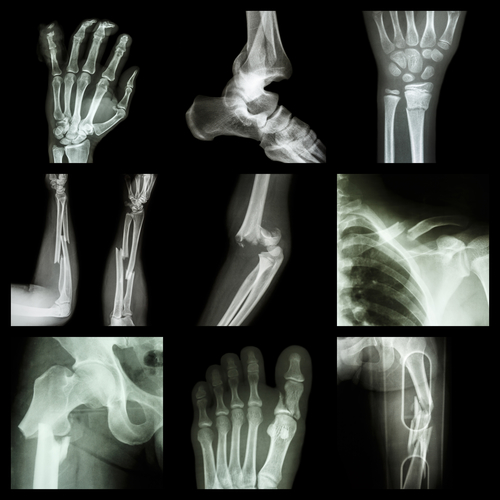

The struts and plates inside this area, known as the metaphysis, help transfer loads from joint surfaces to the exceptionally strong diaphysis. Toward the ends of long bones, the diaphysis flares out, and the interior become cancellous. Tucked away in the spaces of this spongy tissue is the yellow marrow, which acts as a nursery for stem cells that can evolve into a variety of cell types (bone, muscle, cartilage and others). The shaft of the long bones is called the diaphysis, and the term describes the hard shell that surrounds the central (or medullary) cavity, which is filled with soft, sponge-like bone tissue. Red marrow, which produces red blood cells, platelets and most white blood cells, is usually found in the cancellous regions of flat bones such as the hip, breastbone and shoulder blades.įrom an engineering perspective, the upper arm (humerus), forearm (radius), thigh (femur) and shin (tibia) are hollow, thick-walled tubes that can be used as levers to apply force or as columns to support weight. Nerve pathways and blood vessels wind their way through the honeycomb, providing sensation and nourishment to the bone tissue.

Beneath the cortex lies cancellous bone, a honeycombed network of intersecting plates and cross-braced struts (called trabeculae) that greatly reinforces the shell against external mechanical forces. The exterior, called the cortex, consists of a dense smooth layer of bone that acts as an extremely hard shell. And so on.ĭespite their variety, bones share a common internal anatomy. The pelvis is designed for walking upright. The helmet-shaped cranium protects the delicate brain inside. Anatomy of Long Bonesįor the 206 bones that comprise the adult skeleton, form follows function: The broad flat plates of our shoulder blades are there to anchor some of the different muscle groups that give the shoulder such freedom of movement.
BONE FRACTURE PDF
(Reference Table 6A.2.3.1 PDF CSV and Table 6A.2.3.A broken bone, bone fracture, crack in bone, stress break, are often synonymous terms to refer to a structural break in the integrity of a bone. It is, therefore, likely each individual fractures may have been associated with multiple episodes of care. However, it is possible that initial care for a fracture was either at the ED or in a hospital admission, with follow-up visits associated with a physician’s office visit. Fewer than one in ten fractures (8% or less) were treated with inpatient hospitalization in any given year.

The majority of fracture care episodes, 65% to 73%, occurred in a physician’s office. Breaks of the lower leg (tibia and fibula) are the least common overall. Between two-third and three-fourth of lower limb fractures occur in the ankle, foot, and toes. Lower limb fractures, which include those of the hip and upper leg (femur), lower leg, ankle, foot, and toes, are reported in similar numbers to upper limb fractures, ranging from 11 million to 15 million. Fractures of the wrist, hand, and fingers occur slightly more often than fractures of the forearm. In recent years, upper arm fractures have accounted for about 20% of total upper limb fractures. Fractures of the upper arm, or humerus, are the least common. Upper limb fractures, including those of the arm, forearm, wrist, hand, and fingers, have accounted for slightly more than one-half of all fractures, with a range of 52% to 59%. The total number of fractures of the upper and lower extremities treated in physician offices, emergency departments, and hospitals, while fluctuating from year to year, has varied between 12 million and 15 million from 1998 to 2010.


 0 kommentar(er)
0 kommentar(er)
